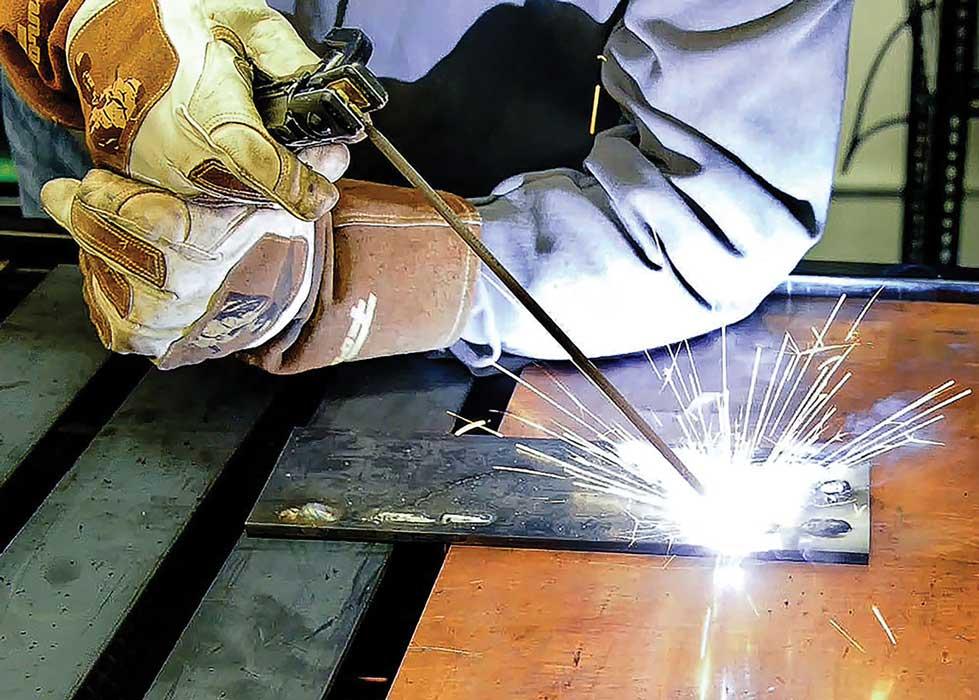The Relevance of Welding WPS: Making Certain High Quality and Safety in Your Tasks
The Relevance of Welding WPS: Making Certain High Quality and Safety in Your Tasks
Blog Article
Getting Welding Excellence: Introducing the Keys of WPS Execution and Optimization
In the realm of welding, accomplishing quality is a pursuit that hinges on the careful implementation and optimization of Welding Procedure Requirements (WPS) By delving into the vital elements, techniques, difficulties, and ideal techniques connected with WPS, a globe of welding quality waits for those who are prepared to explore its depths.
Importance of WPS in Welding
The Importance of Welding Procedure Specs (WPS) in the welding market can not be overemphasized, working as the backbone for making certain consistency, top quality, and security in welding operations. A WPS provides comprehensive instructions on just how welding is to be lugged out, including essential variables such as products, welding processes, joint style, filler metals, interpass and preheat temperatures, welding currents, voltages, travel speeds, and much more. By sticking to a distinct WPS, welders can preserve harmony in their work, leading to regular weld high quality across different projects.

Secret Elements of WPS
Discussing the essential components of a welding treatment specification (WPS) is essential for understanding its role in welding operations. A comprehensive WPS includes several essential elements that guide welders in achieving quality and consistency in their work. One important aspect of a WPS is the welding process spec, which lays out the details welding processes to be utilized, such as gas tungsten arc welding (GTAW) or secured steel arc welding (SMAW) Furthermore, the WPS consists of information on the welding materials, such as the type and specs of the base steel and filler metal to be made use of. The WPS also specifies necessary variables like welding parameters, preheat and interpass temperature demands, and post-weld heat treatment procedures. Moreover, it consists of details on joint design, fit-up, and any special techniques or preventative measures necessary for the welding operation. By incorporating these crucial elements into the WPS, welding procedures can be standard, making sure top quality, efficiency, and safety in welding operations.
Strategies for WPS Optimization

Second of all, training and qualification of welding workers according to the certain needs of the WPS is critical. Supplying thorough training programs and ensuring that welders are certified to perform treatments laid out in the WPS can lead to better welds and minimized rework.
In addition, leveraging modern technology such as welding software and tracking systems can aid in maximizing WPS. These devices can aid in tracking variables, guaranteeing specifications are within specified limitations, and offering real-time comments to welders, allowing them to make prompt changes for improved weld high quality.
Typical Challenges and Solutions
Dealing with barriers in applying the strategies for WPS optimization can hinder welding procedures' next efficiency and quality. One common obstacle is inadequate training or understanding of the welding procedure requirements (WPS) among the welding team.
One more difficulty is the lack of appropriate documents and record-keeping, which is important for WPS optimization. this post Without clear records of welding parameters, materials made use of, and inspection outcomes, it becomes difficult to determine areas for renovation and ensure uniformity in welding processes. Carrying out a durable documentation system, such as electronic welding administration software program, can help streamline record-keeping and promote data analysis for continual improvement.
Additionally, irregular welding devices calibration and maintenance can pose a substantial obstacle to WPS click site optimization. Normal equipment checks, calibration, and maintenance timetables must be stuck to purely to guarantee that welding parameters are accurately regulated and preserved within the specified tolerances (welding WPS). By addressing these typical challenges with positive solutions, welding operations can improve efficiency, top quality, and overall welding quality
Best Practices for WPS Application
To make sure effective WPS application in welding operations, adherence to industry standards and meticulous focus to detail are critical. When starting WPS application, it is important to start by completely recognizing the particular welding requirements of the project. This requires a detailed testimonial of the welding treatment specifications, materials to be bonded, and the environmental conditions in which the welding will certainly happen.
When the needs are clear, the following action is to select the proper welding treatment that straightens with these requirements. This includes consulting the relevant codes and standards, such as those provided by the American Welding Society (AWS) or the International Organization for Standardization (ISO), to ensure conformity and high quality.
Moreover, recording the entire WPS application process is crucial for traceability and top quality control. Comprehensive records must be kept relating to welding specifications, material prep work, preheat and interpass temperatures, welding consumables used, and any deviations from the original treatment. Regular audits and reviews of the WPS can help identify locations for improvement and guarantee continuous optimization of the welding process.


Verdict
To conclude, the execution and optimization of Welding Procedure Specifications (WPS) is vital for achieving welding quality. By understanding the crucial elements of WPS, implementing efficient strategies for optimization, addressing typical challenges, and complying with ideal methods, welders can make certain premium welds and secure working conditions. It is critical for specialists in the welding industry to prioritize the correct implementation of WPS to improve total welding performance and accomplish wanted outcomes.
The Value of Welding Procedure Specifications (WPS) in the welding market can not be overemphasized, serving as the foundation for ensuring uniformity, high quality, and safety and security in welding procedures. A WPS gives comprehensive instructions on just how welding is to be carried out, including vital variables such as materials, welding processes, joint style, filler steels, preheat and interpass temperatures, welding currents, voltages, traveling rates, and extra. One essential element of a WPS is the welding process specification, which outlines the certain welding processes to be used, such as gas tungsten arc welding (GTAW) or shielded steel arc welding (SMAW) By including these vital elements into the WPS, welding procedures can be standardized, ensuring top quality, efficiency, and safety and security in welding operations.
It is necessary for specialists in the welding sector to focus on the correct execution of WPS to boost general welding efficiency and attain wanted end results.
Report this page